If you are considering getting into archery, you’re likely searching about bows online. And one thing you probably noticed is there are two major types of bows – compound and recurve bows.
The difference between the two types of bows is apparent – recurve bows look much simpler and basic than complex compound bows.
Of course, there is more to this difference than just their appearance. Both recurve bows and compound bows are better in different situations.
To know which bow is right for you, this guide delves deep into the two bows so you can have an easy time picking the right one.
Let’s start by briefly describing the two bows.
Table of Contents
What Is a Recurve Bow?
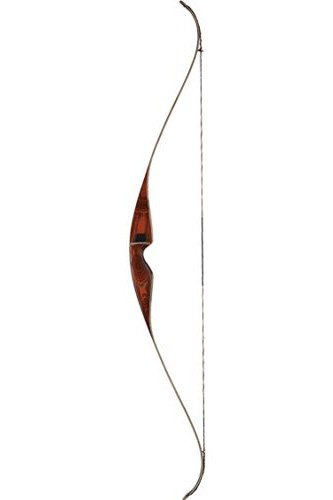
Recurve bows are the most basic bow, featuring a single string and one to three features on their frames, normally made from wood. So, if you would like to feel like Robin Hood when you go hunting, a recurve bet fits the bill.
These bows got their name from the shape of their frame. The pointing tips curve out towards your target, which makes the bow powerful when pulled back. They feature a traditional design but with curvatures on the ends of the limbs.
Large recurve bows, when used correctly, can fire several hundred yards accurately at a full arc. However, the larger the recurve bow, the harder it will be to pull the string back.
In terms of portability, recurve bows are easier to carry than compound bows, thanks to their light nature. This makes them better for hunting far away. They are also easier to maintain because they have fewer parts. However, although they are cheaper to buy, replacement parts can be pricier, especially when the frame is fractured.
Overall, a recurve bow is a great hunting tool for people who want to go hunting the ancient way. However, mastering how to shoot right with a recurve bow takes a lot of practice and is harder than using mechanized compound bows. In addition, due to a lack of the mechanisms that compound bows have, i.e., pulleys and wheel, they are harder to use and might demand more upper strength to draw the arrow. Another downside is that they require you to be closer to the target. However, they are lighter and easier to carry, giving you more advantage in long-distance hunting.
What is a Compound Bow?
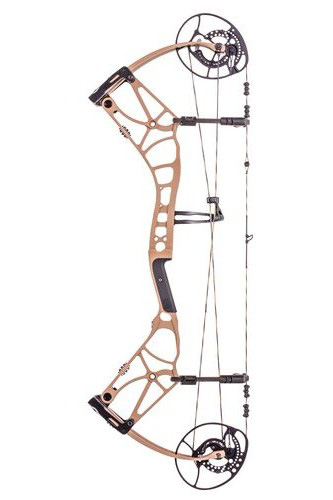
Developed in the ’60s, compound bows are relatively recent in their design and have become a popular choice for both target shooting and hunting. They use a system of pulleys and cables to generate greater speed and power.
Most are made from modern materials, including carbon fiber, fiberglass, and metal alloys, to reduce their weight. However, despite having cables and pulleys that seem complex, new archers shouldn’t be intimidated as they have an easier learning curve than recurve bows. In addition, they are easier to shoot with and tend to be more accurate thanks to increased arrow speeds.
Not to mention that they are easier on your body as they require less upper body strength to shoot. Better yet, many compound bows allow for adjustment of draw weight, which can allow you to draw the weight to match your physical strength.
Generally, compound bows generate more power than recurve bows, thanks to their pulley system and mechanical cam. As a result, you can effortlessly hold an arrow in a firing position for longer without feeling fatigued.
In addition, compound bows help one shoot accurately, thanks to the draw stops, unavailable on recurve bows.
Also, most compound bows come with pre-installed bushings, which allow you to install multiple accessories. This is not to mean that recurve bows will not have this option, but it is likely to have this option as a standard on compound bows.
For beginners who would like to get into bow hunting, a compound bow is your best bet. These bows are lighter, require little effort to draw the bow, and have greater accuracy.
On the downside, compound bows are pricy for archers on a tight budget.
What Is a Longbow?
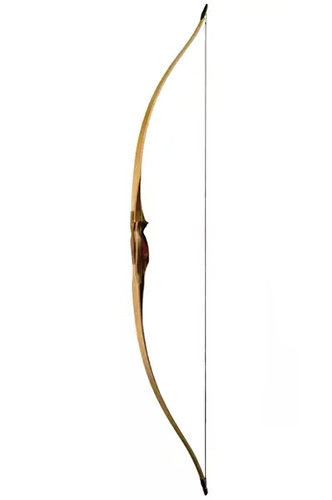
Longbows are uniquely simple and are very long. When strung, they take a “D” shape. So, to describe longbow, we can say that it’s just a simple stick and string that needs the archer’s skills and instincts to shoot right.
Longbow forms a greater depth when drawn than the recurve bow, which means they are harder to shoot accurately.
With that overview of the three main types of bows in mind, let’s now delve into the differences.
The Differences between Recurve and Compound Bow
There are differences to consider when choosing between a recurve bow and a compound bow. Both bows shoot at great speeds due to the tension formed by the string and thus can be used for target practice and hunting, but the aspects differ.
Let’s discuss the differences in varying aspects;
Structure
The structure of the bows is a differentiating factor. The recurve bow looks more like a traditional bow. With a curved bow and strings that stay stretched between the bow’s ends, this bow takes a deeper curve when drawn. Most recurve bows are made of wood to make them flexible. However, newer ones are made of more flexible materials such as fiberglass and carbon fiber.
On the other hand, a compound bow features more than a string and a frame. They have pulleys and strings to make it easier for one to fire an arrow. The bow frame is usually made of tough but light materials (aluminum or carbon) and features different parts, including limbs and grip. They are smaller than recurve bows.
Power
If we compare the two bows in power, the compound bow is more powerful than their recurve counterparts. Majorly, the pulleys and other accessories attached to it make the compound bow more powerful and faster. Also, since a compound bow is easier to draw, you can use heavier arrows to make your shots impactful.
Without a doubt, compound bows will perform better in terms of arrow power than a recurve bow because of their unique string and pulley arrangement.
Aiming
The longer string and cams alignment on the compound bow allows the archer to draw enough power. In addition, the let-off power makes it easier for the archer to hold the bow as it takes lesser strength to draw back the arrow. This improves stability and reduces handshaking during shooting, allowing the archer to aim and hit the target with more accuracy.
On the other hand, for one to pull the same draw weight using a recurve bow, you have to use more of your body strength. And since you will need to hold the string when aiming, you may experience some shakiness of the hand, and this tends to reduce accuracy.
Therefore, we can say that it is easier to aim using a compound bow than using a recurve bow.
Shooting
There is a difference in shooting using the two bows. The recurve bow requires some skills to consistently hit your target, which means it calls for practice. On the other hand, the compound bow doesn’t require a lot of skills, thanks to the accessories attached to it that make shooting your target easy.
However, the mechanical bit of the compound bow makes it lesser fun to shoot with, especially for people who like to do things themselves. Some compound bows jerk when you draw the string, making the weight of the draw shift significantly. The traditional recurve bow doesn’t jerk, making pulling and releasing smooth and fun.
Despite their immense power in shooting accuracy, a compound bow can be uncomfortable to use, especially when not crafted with precision.
On the positive side, they have a shorter learning curve as compared to recurve bows.
Maintenance
As we said, the traditional recurve bow feature a simple design, meaning it is quite straightforward to fix. You can disassemble the bow without a lot of difficulties. If this bow’s limb gets damaged, you can easily change it or set it with a bolt. In the case of a compound bow, you cannot disassemble it if you are not an expert. This makes it easier to repair and maintain a recurve bow than a compound bow.
The Similarities between Compound and Recurve Bow
Both compound bows and recurve bows have certain similarities in different aspects;
Style
Your shooting style will follow the same mechanics irrespective of the type of bow you are using to shoot. Therefore, you can easily switch from one bow to another once you get used to the archery game. However, you will need to make slight adjustments to the whole process when switching from a recurve bow to a compound bow.
Noise
Both recurve and compound bows can be fitted with string silencers and limb dampeners to help minimize the noise created when you shoot.
Both bows can be quiet when adequately tuned and when you are using an arrow with the right weight for your bow power.
Size
Both recurve bow and compound bows can have the same size, but they will have different powers. For example, a compound bow with the same size as a recurve bow will generally have more power.
For example, a 70lbs compound bow will fall between 30″ and 32″ in size (from one limp tip to the other). On the other hand, a recurve bow with the same power will be between 60″ and 64 inches from tip to tip. This means a recurve bow will have double the size of a compound bow with similar power.
Factors to Consider When Buying the Best Compound Bow or Recurve Bow
What Size of Compound Bow or Recurve Bow Do I Need?
Having the right compound bow size is key to helping you have enjoyable archery moments. To get the right size, there are several things you need to keep in mind.
Draw length
This is the distance at full draw from the curved point in the string to the grip in addition to 1.75 inches. To get your ideal draw length, spread your arms outwards and form “T” with your palms open. Next, have someone measure the distance from your left middle finger to the right middle finger. Divide the distance by 2.5. This will give you the approximate draw length you need.
Draw weight
The draw weight is the force required to pull the string to full draw. You should get a bow that allows you to pull back consistently without tiring. Most males will find 50lb-70lb draw weight comfortable. The good thing is that most bows allow for slight draw weight adjustment.
The right size bow will help you focus on your target without minding about performance.
Weight of the Bow
Accurately shooting your target depends on several factors, including the weight of the bow. A bow that’s too heavy will strain your muscles and ruin your balance. Therefore, make sure you buy a bow that’s perfect for your body weight.
Portability
Portability is another important factor to consider when buying a bow. Therefore, look out for bows with the collapsible feature or those with removable limps for easy transportation.
Whatever the case, think about how comfortable it will be to carry a bow on the field. Is it something you can hold as you go over tough terrain, or will you need additional storage for it? All these small details dictate how enjoyable your hunting experience will be.
Adjustability
As a beginner, it is important to go for a bow that allows for adjusting different aspects, such as draw weight. Since you have not mastered your ideal specifications in a bow, it is important you go for a bow that allows you to adjust different aspects.
Construction
Your bow frame needs to be made of quality materials. Some of the typical materials used to make bows include carbon, fiberglass, wood, and synthetic foam. Typically, bows made of carbon fiber will be pricier than wooden ones. This is because the material is premium and offers better performance. Still, wood and carbon fiber are the best material for bows.
Cost
Of course, you need to consider your budget and make sure you get the best bow for the money. Bows come at different prices, which is why you should set a budget. Keep in mind that, although in most cases, price dictates quality, you shouldn’t use this as your only consideration when buying bows.
Accessories
Bows, especially compound bows, come with several accessories, including pulleys and cams. Although not a necessity, it doesn’t hurt to buy a bow that comes with multiple accessories.
Compound Bow Shooting Tips and Hacks for Success
Here are expert tips to help you improve your shooting success using a compound bow
Understand Let-Off
A compound bow uses cams and cables to reduce holding weight when the string is at full draw. This reduction in draw weight is called let off and is expressed in the percentage of the overall draw weight.
Let-off is helpful, especially for hunting or competition, as it allows shooting to hold a bow at full draw and place accurate shots.
For starters, go for a bow that offers high let-off to help you hold the draw for longer. Generally, the average let-off is approximately 65 to 75 percent.
Draw Length
This is the distance from the string nock point to the end of the grip plus 1.75 inches. Typically, it indicates the length of the arrow needed by a compound archer to shoot right. For a man with average height, a draw length of 28 inches is ideal, while a woman with average height should be 25.50 inches.
Target Distance
Your distance from the target influences your accuracy. Make sure you are at an ideal distance if you are starting out. For beginners, an ideal target distance is between 18-20 yards. You can increase this distance as you perfect your shooting skills.
How Does a Compound Bow Work?
Compound bows employ a technology that ensures you get accurate shots without a lot of hassle. For a typical bow, you have to draw the arrow back on a bowstring and build tension. When you release the tension, it launches the arrow towards the target. This means, the more the draw, the greater the tension or weight you will fall, and the faster the arrow will move.
For compound bows, they employ innovative technology to counter the manual pullback. It uses a cam system that allows you to hold the full draw length without feeling a lot of tension. Simply put, drawing a compound bow is difficult, but holding at the same length is easy, making aiming a breeze.
Recurve Bow Shooting Tips and Hacks for Success
Here are three surefire tips for sharpening your shooting accuracy with recurve bow.
Improve Your Upper Body Strength
With recurve bow, your upper body strength determines whether or not you will be able to achieve full draw consistently.
That’s why you should exercise to build upper body strength to reduce fatigue during shooting accuracy.
Know Your Ideal Shooting Distance
For experts, an accurate range for shooting using a recurve bow is between 60 to 100 yards. However, for beginners, especially during hunts, the effective shooting distance is somewhere between 20 and 40 yards, depending on your bow draw weight and competency.
Practice to Gain Experience
With a recurve bow, you have to practice many times to master the skill of shooting accurately. Therefore, practice in open fields to improve your shooting skills.
How Does a Recurve Bow Work?
A recurve bow has limbs that curve from your position when unstrung. As a result, it shoots better and delivers powerful impacts than longbows, thanks to its number-three shape. At the grip, the bow curves towards the target, thereby propelling the arrow faster than on a longbow.
Which Bow Should I Choose?
For Hunting
Go for compound bows as they are easy to use and carry, and have great accuracy. That’s why the compound has become the bow of choice for the hunter.
For Youths
We would recommend compound bows for youths as they have a shorter learning curve and are fun to use. If you would like to generate interest in archery for a teenager, get them a compound bow. It’s flashier and easier to use.
For Beginners
The best choice for beginners depends on your archery goals. If you would like to compete in archery games, then a recurve bow is the most ideal as it will help you sharpen your skills. Compound bows tend to mask your weaknesses. However, if you are just into archery for fun, get a compound bow.
For Bow Fishing
A compound bow will be more suited for bow fishing thanks to its compactness and speed. Not only do compound bows offer a more compact package that allows one to maneuver easily in a boat, but they also generate faster arrow speeds to increase your chances of hitting your target.
For Target Shooting
Modern compound bows are designed for ease of use and accuracy, making them great for competitive archery and target shooting.
Conclusion
As a beginner in archery, one most important decision you have to make is the type of bow you will shoot. There are many different styles of bows to choose from, but the two most popular are recurve bows and compound bows.
Which bow you choose when you are starting archery depends on your archery goals. If you are planning to get into competitive archery, a recurve bow may suit you better. Recurve bows are more challenging to shoot, but they will help you sharpen the shooting skills that you can transfer to a compound bow later on the brighter side.
Compound bows are flashier, but they can hide your incapacities to shoot accurately. If you are just doing archery for fun, compound bows might suit you more.
Anyway, you’d better read more articles about recurve vs. compound bow that can help you know how to pick the right bow for beginners.

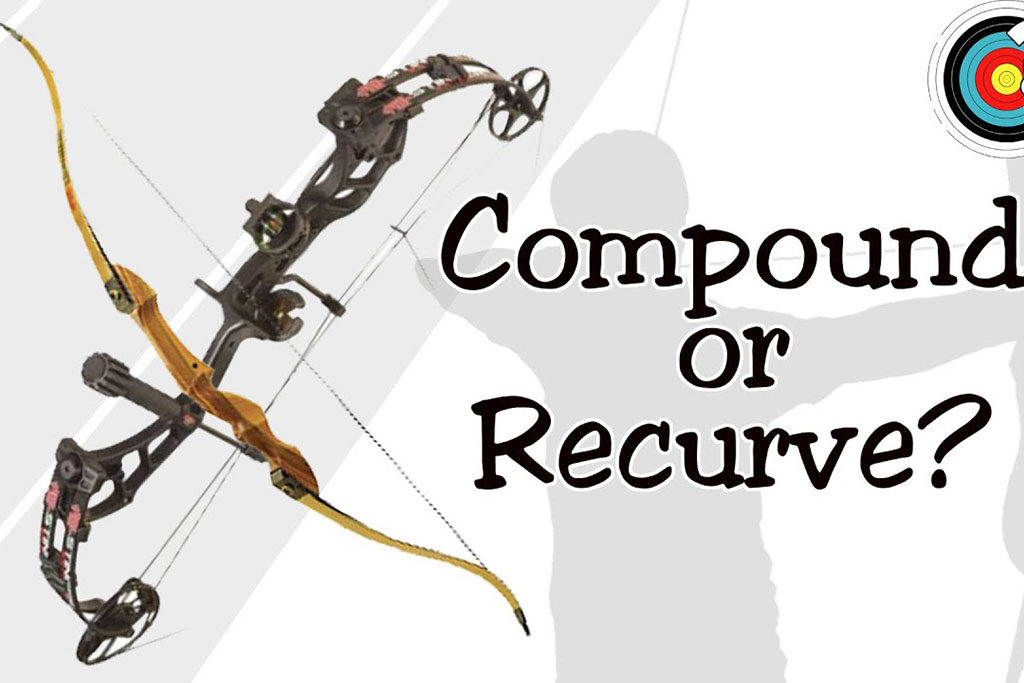
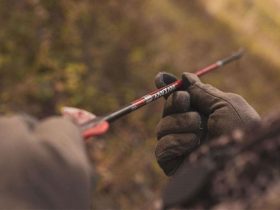
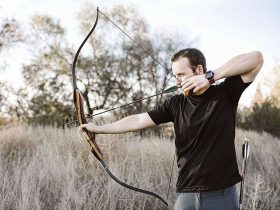
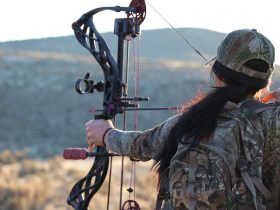

Leave a Reply